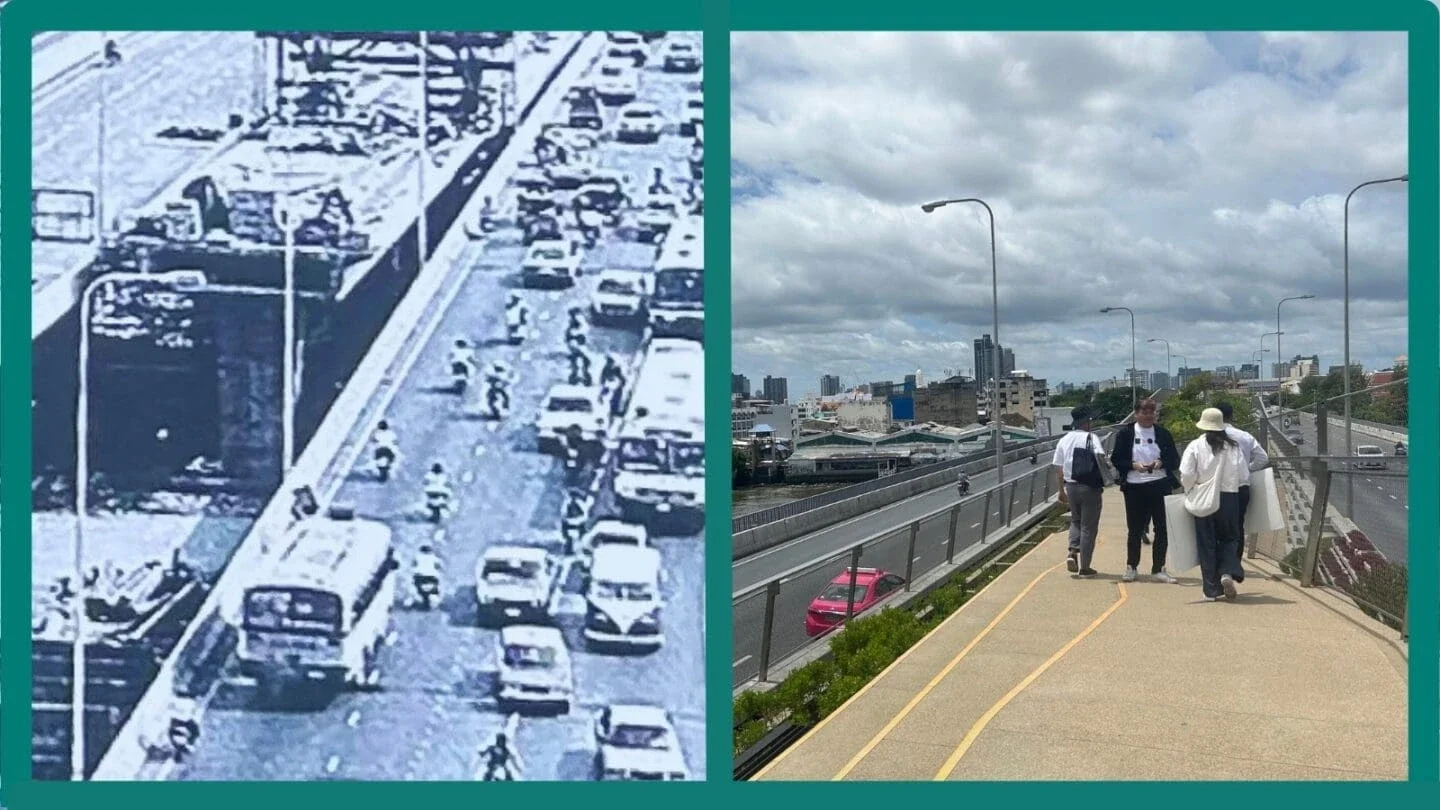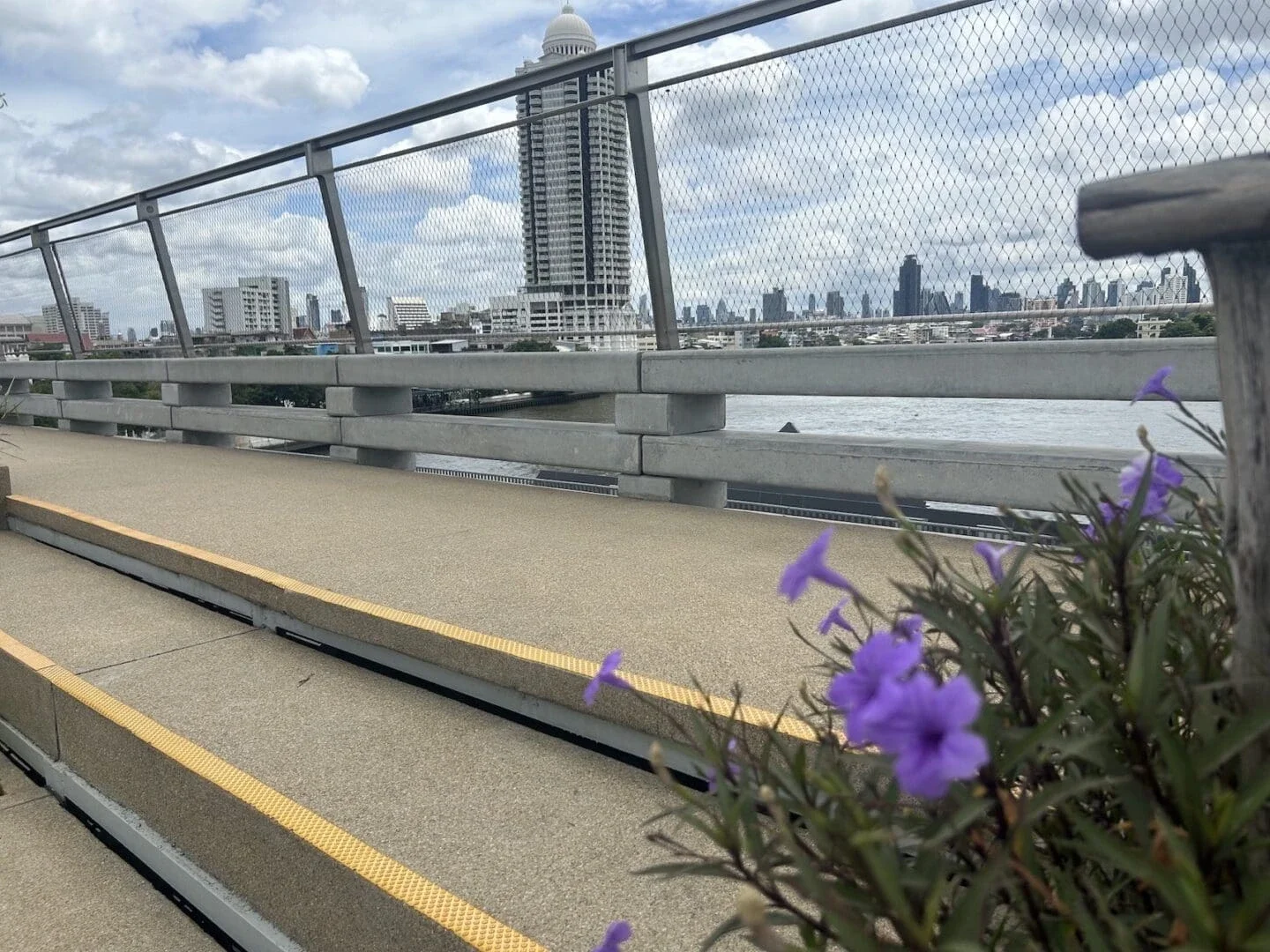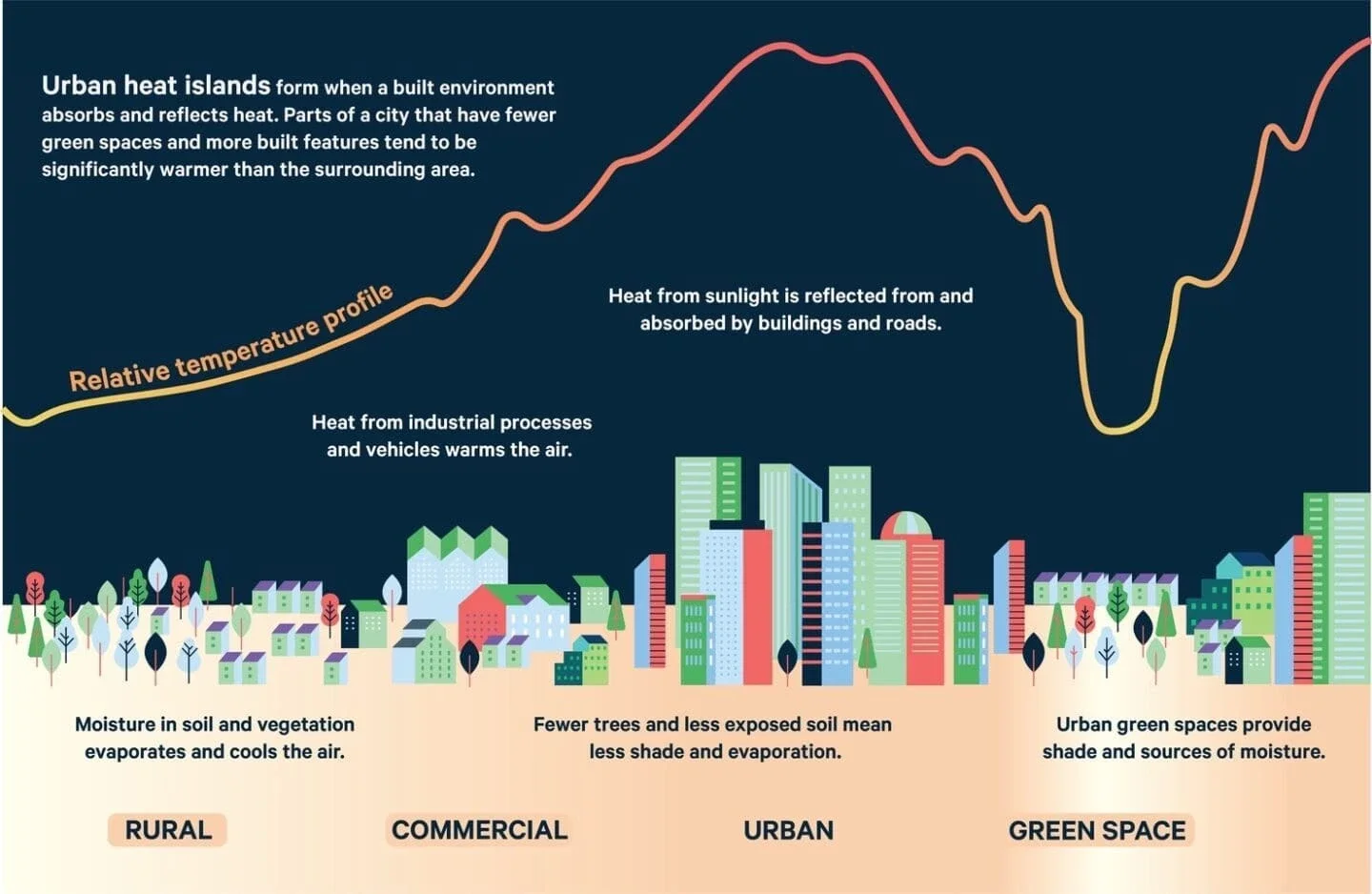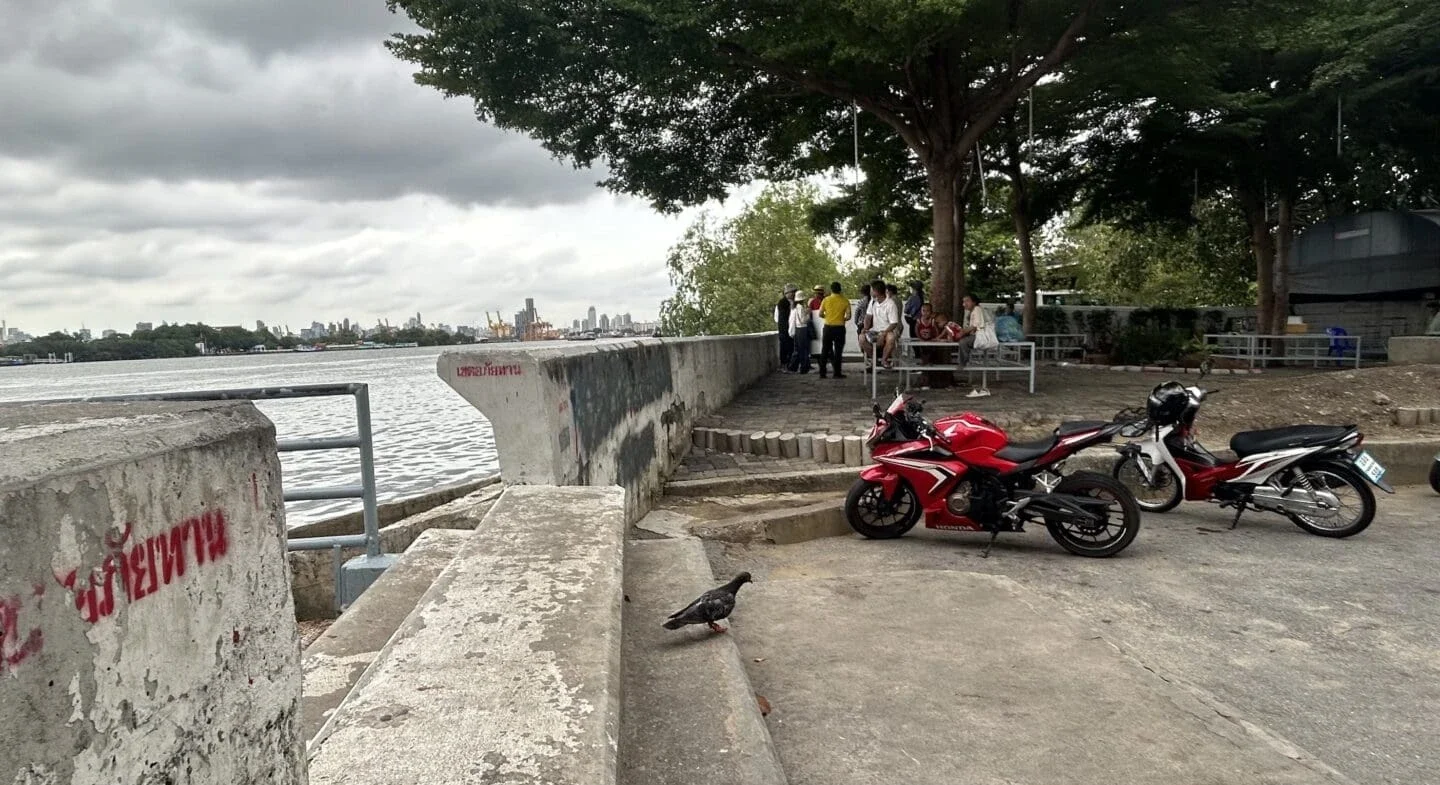It was a eureka moment.
“We knew immediately that this could be a quick and valuable win,” Dr. Niramon said. “It’s critically important to listen to the community as we transform Bangkok into a more walkable, greener city that contributes to the battle against climate change.”
The challenges Bangkok faces in a changing climate include flooding, sea-level rise, extreme heat, and potential water resource shortfalls.
UddC, a grantee of The Rockefeller Foundation since 2009, and a leader in innovative urban development and deep community engagement, directed the design of the Sky Park, which opened in June 2020, suspended above the Chao Phraya, or “River of Kings,” which meanders through the heart of the country.
The grocer, looking over his shoulder at the green, elevated walkway, acknowledged a sense of pride. “My mission is finally accomplished.”
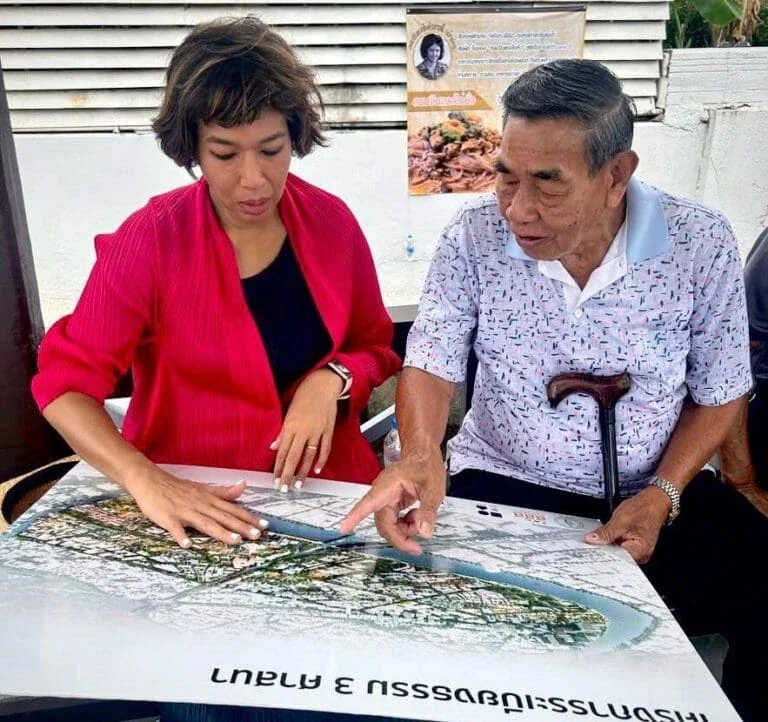
“Urban Acupuncture” Delivers Impressive Outcomes
The Sky Park project an example of “urban acupuncture:” do very little, but do it at strategic points.
It aligns with Green Bangkok 2030, launched by the Bangkok Metropolitan Administration (BMA) to support two United Nations Sustainable Development Goals:
- SDG 11, to make cities safe, sustainable, and resilient, and
- SDG 13, to take urgent action to combat climate change and its impacts.
It also mirrors the United Nations vision for cities promoted on World Cities Day, marked each Oct. 31 and calling for climate-friendly sustainable development.
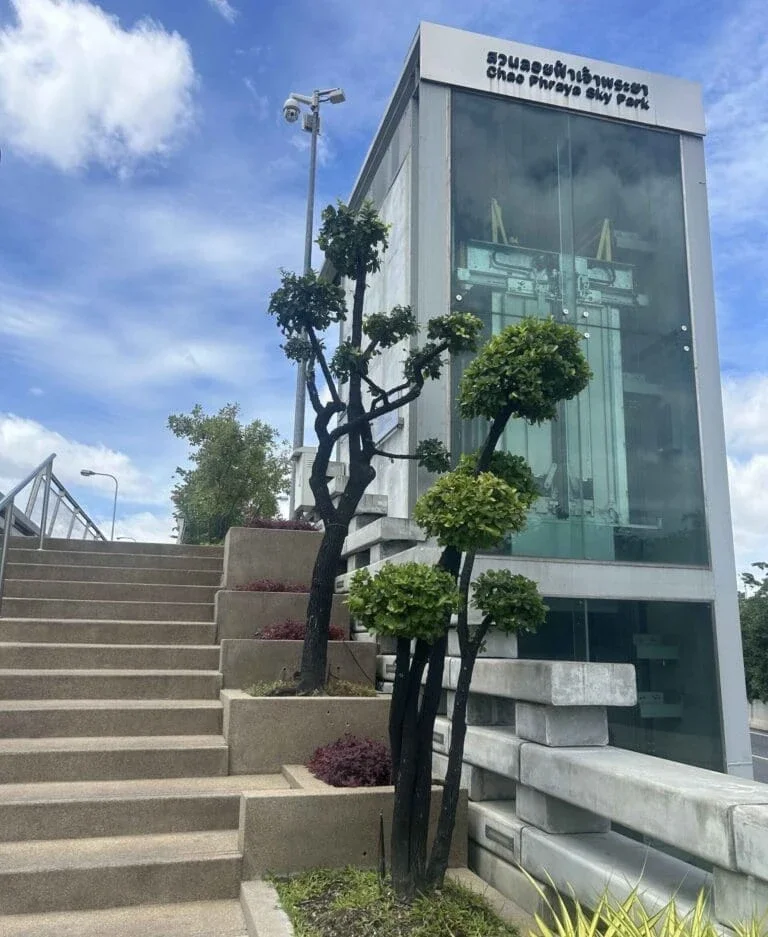
“On top of that, it enables Bangkok to deliver on the three pillars needed to build urban resilience: improving the health and well-being of its citizens, increasing adaptability to climate and other threats, and driving a strong, competitive economy through climate-conscious growth,” noted Elizabeth Yee, Executive Vice President, Program Strategy, The Rockefeller Foundation.
“More than half the world lives in urban areas, and that number is projected to climb to 70 percent by 2050,” Yee said. “Rising temperatures and extreme heat have had a significant impact on Bangkok in recent years. The Sky Park delivers multiple resilience benefits – it improves the city’s walkability while cooling and improving its resilience to sea level rise and drought.”
This demands meticulous planning, as well as the robust community engagement championed by UddC.
Elizabeth YeeExecutive Vice President, Program StrategyThe Rockefeller Foundation
Now, pedestrians and bicyclists can savor a 360-degree panoramic city view as they walk from Bangkok’s historic enclave of Thonburi, once Thailand’s capital and renowned for its cultural and religious diversity, to the city’s busier, more modern districts.
It also creates a greenspace that contributes to carbon sequestration, with native flora chosen for their ability to thrive in shallow soil beds and resilience to strong winds and sunlight.
“Walking on the Sky Park above Chao Phraya River in Bangkok, the city where I reside, I’m greeted by beautiful views, especially at sunset,” said Deepali Khanna, Vice President, Asia Regional Office, The Rockefeller Foundation. “It’s heartening to witness the determined initiatives undertaken in my city to enhance its livability while combatting climate change.”
Just as importantly, the project helped kick off a broader effort to revitalize the inner city.
Bangkok: By the Numbers
- 1The 241-year-old city, also known as Krung Thep (City of Angels), began as a small fortress town. It now has a population of about 11 million and is listed as high as number three among the world’s most traffic-clogged cities.
- 2Its vehicles emit more than 941 kilograms of carbon dioxide annually, according to TomTom Traffic Index. Population density is about 5,300 people per square kilometer.
- 3Excluding traffic islands and private gardens, Bangkok has approximately 3 square meters (9.8 square feet) of greenspace per person, one of the lowest in Asia and below the minimum 9 square meters (29.5 square feet) recommended by the World Health Organization.
- 4A recent study of 56 urban green spaces across 17 countries showed urban parks have a critical role to play in fighting climate change because of the carbon they sequester while simultaneously reducing artificially high temperatures from the Urban Heat Island Effect.
- 5Highly developed urban areas can experience temperatures 9 or 10 degrees Celsius (15 degrees Fahrenheit) higher than surrounding vegetated areas, increasing risks to human health and infrastructure.
Pocket Parks Turn Back a Concrete Tide
Bangkok Governor Chadchart Sittipunt has pledged to create 500 “15-Minute Pocket Parks” within 800 meters of most homes by 2026 when his term concludes.
Though studies clearly show the benefits of green infrastructure, in cities like Bangkok where land is scarce and real estate costs high, pocket parks – akin to outdoor living rooms – offer an appealing substitute to larger public parks.
The BMA mission aligns with UddC’s vision. Dr. Niramon, a powerhouse of energy and focus, has taken on the monumental task of helping add vegetated zones to Bangkok while placing community engagement at the heart of urban planning.
“Bangkok is overcrowded, but there are plenty of underutilized spaces,” Dr. Niramon noted.
Pocket parks in Bangkok can curb vehicle-related greenhouse gas emissions by promoting walkability. They can also can revitalize neglected corners of the city while strengthening communities and serving as a catalyst for additional investments in neighborhood improvements.
With careful planning, they can also address issues of inequity. Some city districts, Dr. Niramon noted, have no green spaces at all.
To solicit citizen participation, UddC held a Greener Bangkok Hackathon, aimed at bringing together a wide variety of voices to consider where best to reclaim urban spaces, push back the concrete, and create tiny green oases.
“Great ideas come from everywhere,” Dr. Niramon said. “Doctors, shopkeepers, teachers. We even had an elementary school student participate.”
Through the hackathon, UddC identified 21 potential projects and then prioritized some they hope to complete this year.
Finding Green Serenity Beside a Busy Highway
Among them is a government-owned lot in the Phra Khanong neighborhood of central Bangkok, right off the busy commercial street of Sukhumvit Road.
The project is expected to be completed in the next few months at a cost of about 21 million baht, or $600,000 USD. Despite the substantial investment, “we will get this done no matter what,” vowed Phra Khanong District Assistant Panya Sawadsaeree.
Dr. Niramon noted that about 10,000 people live in the immediate area, currently without any access to green space. Its location means it will be easy for others to access as well.
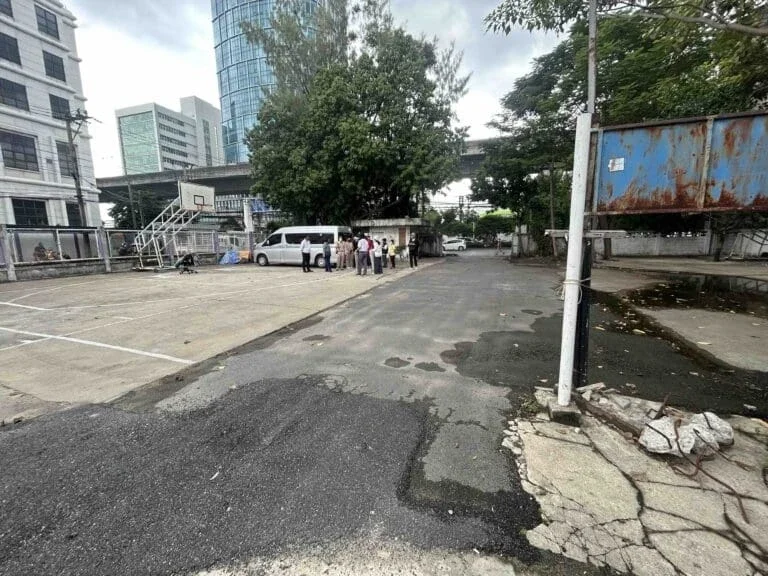
Growing Vegetables in a Community Garden
A 35-minute walk away is another site that UddC hopes to help develop into a community garden.
“Urban farming arrived last year in Bangkok,” Dr. Niramon noted during a visit to that site. “The plan is for the adjacent community and others to be able to grow vegetables.”
A neighbor who identified himself as Prayoon, 40, said he would be glad to see the space alive with plants. “If it happens, I will take a chair and sit right in the field, under that tree,” he said. “Please do it soon.”
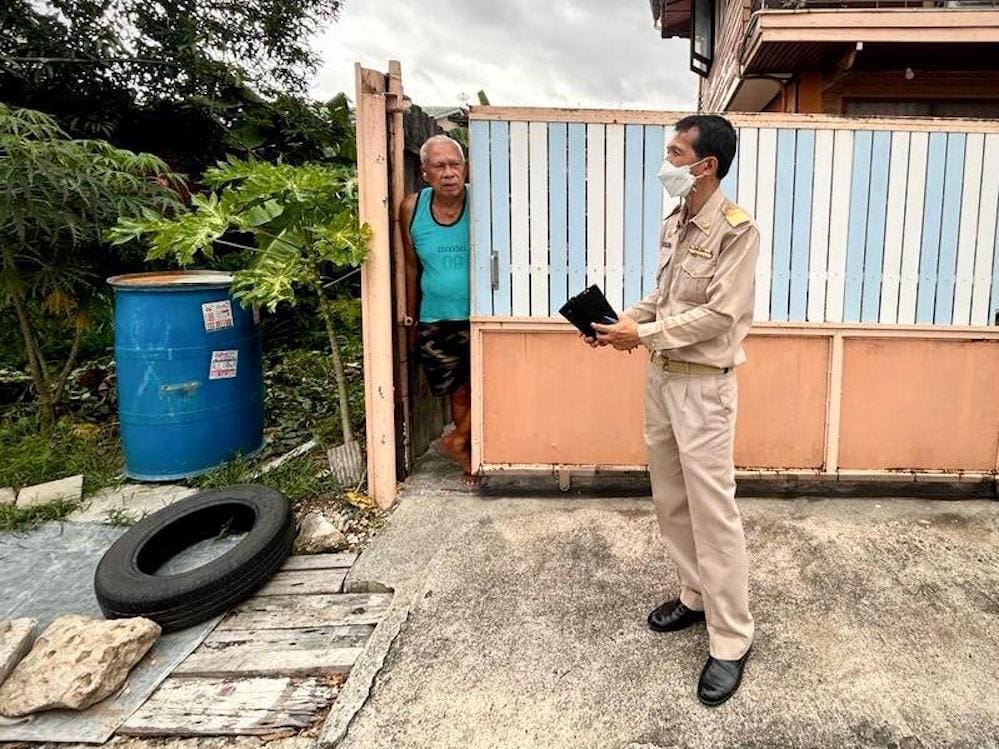
Reclaiming a Square for a Weekend Market
The third site is at Sanphawut Pier, where residents and visitors alike go to catch a ferry to across the Chao Phraya River to Bang Krachao, known as the “Green Lung of Bangkok” for its lush gardens, mangrove forests, and serene bicycling paths.
The square in front of the pier, which also faces a Buddhist temple, can become a site for a weekend market after a green makeover, Dr. Niramon noted during a recent visit. “This is what the shopkeepers here want,” she said. “Right now, people just rush by. But with some attention, this could be transformed into a charming, safe, revenue-producing park.”
“Green spaces aren’t just about helping the environment,” she said. “They can boost a city’s economy and social life too. Precisely how varies from site to site. That’s why it’s so important to engage the community from the very start.”
More in this Matter of Impact Edition
Composting for the Climate and Environmental Justice
A pioneering initiative takes a bite out of food waste and environmental injustice, creating a lasting impact in Baltimore.
Read MoreFighting Climate-Worsened Child Hunger, One Cup of Uji at a Time
Most Kenyan schoolchildren head to class without having eaten breakfast. Cup of Uji is doing something about that.
Read More